No products in the cart.
On Thunder Mountain
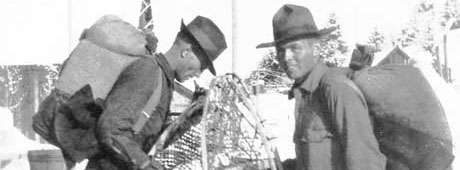
Dan, Grace, and Gold
By Robin McRae
Photos Courtesy of Robin McRae
When my grandfather, Daniel Carrus McRae, arrived in Idaho at the age of sixteen, his lifelong quest for gold began. He died in 1954, when I was thirteen, which was old enough for me to become fascinated with his remarkable life. I’ve long been an avid collector of written materials, photographs, and other details of our family’s pioneering history in Idaho mining, which began with my grandfather. Ever since Dan (later called DanDan by his four grandkids) was small, he had professed an interest in the wild Idaho backcountry, but his path there was a difficult one. Born to a farming family in Mallory, Minnesota, in 1878, his mother Eliza died after giving birth to Dan’s younger sister. His father James did the best he could to raise the young family with the help of aunts and uncles, who also farmed around Mallory, but Dan and his sister entered a nuns’ boarding school in Fargo, North Dakota, in 1885. Dan’s only formal schooling occurred during the next six years. After finishing eighth grade, he went to work on the Northern Pacific Railroad, which was being built through Montana. Using the railroad for both work and transportation, he arrived in Spokane, where he worked on farms and did odd jobs until he made his way to Weiser.
From there, my grandfather went on to the gold mining town of Warren in what is now the Payette National Forest. Although still sixteen, he was fully grown at six feet four inches. He went to work for Jim Long, who was placer mining for gold in the area now known as Long’s Gulch. Dan built a cabin on Long’s Creek and worked on the claims for a year.
In the spring of 1897, Dan made his first trip to the Thunder Mountain District, a seven-day journey in the wilderness. He and three other men left Warren and crossed the South Fork of the Salmon River. They took the Sheep Creek Trail and arrived at what would be named Yellow Pine Basin. At that time, there was but one cabin on the banks of Johnson Creek, and a few other people were living in tents. Everyone was waiting for the snow to melt on the trails so they could travel to Thunder Mountain, where the discovery of gold had been reported by the Caswell Brothers, Lou, Dan, Ben, and Cort.
In the Yellow Pine area, Theodore van Meter joined the group, and his knowledge of the region turned out to be a big advantage. When conditions cleared, the party traveled up Quartz Creek to the headwaters of Big Creek. From there, they followed Lick Creek to Monumental Creek and took its west fork to what is now called the Dewey Mine in the Thunder Mountain Mining District. My grandfather located several claims near those of the prospectors who first discovered gold there the previous year, the Caswell Brothers.
Dan McRae.
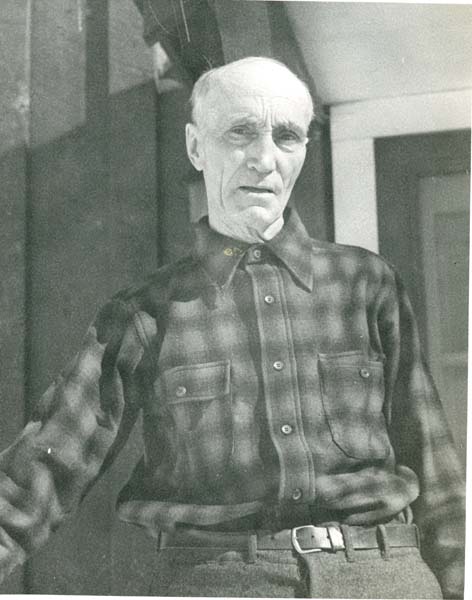
Dan with his rifle at the Sunnyside camp.
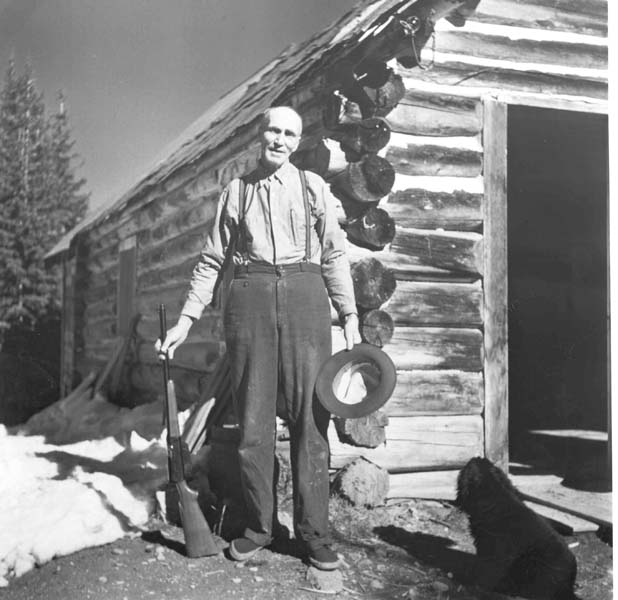
Dan (left) and son Bob placering at Dewey Hill.
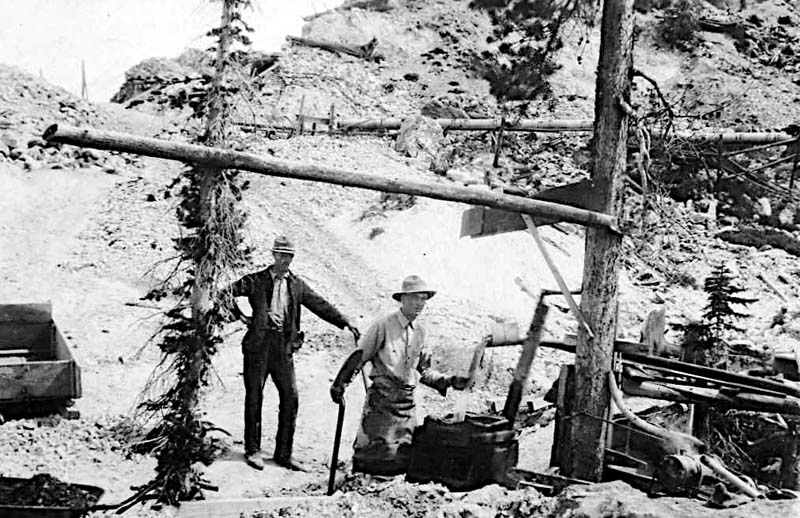
Dan McRae (left) and George Short at the Warren Hotel.
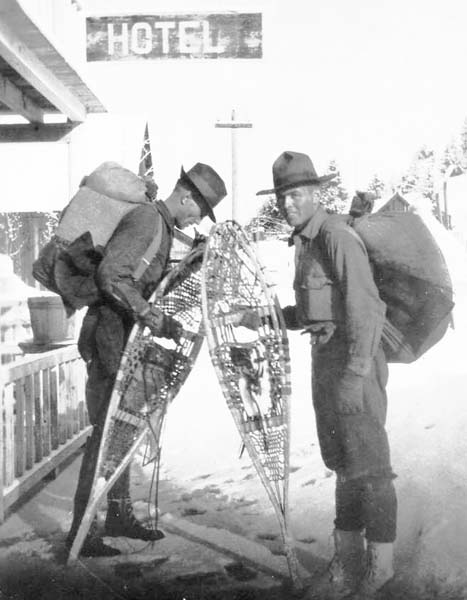
Robin with (from left) his dad, Salty Pickens, his grandfather, and Chas Edmons.
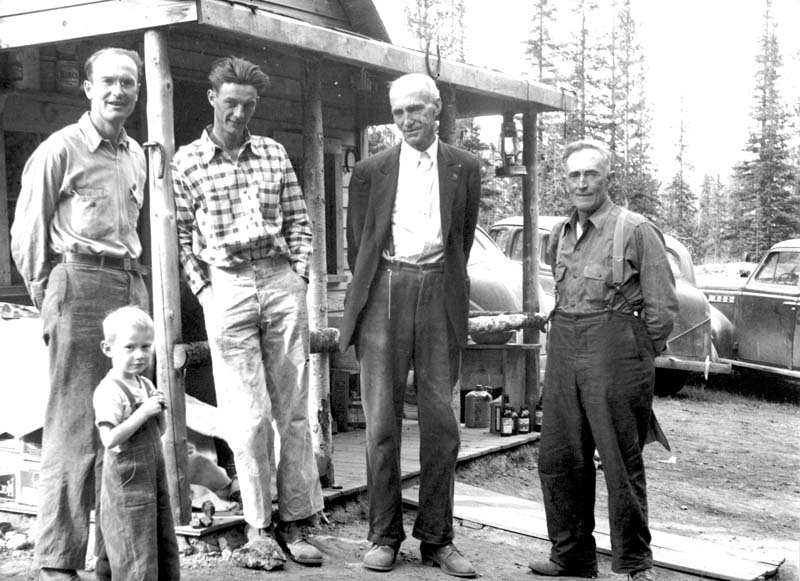
Grace and Dan outside their Stibnite home in their later years.
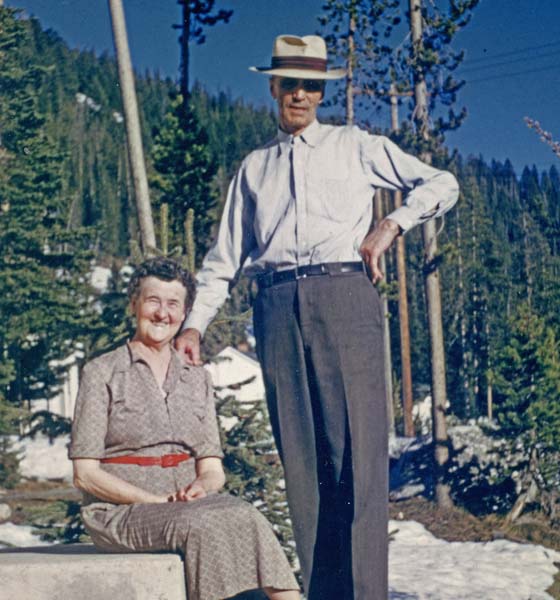
Portal of the Sunnyside Mine.
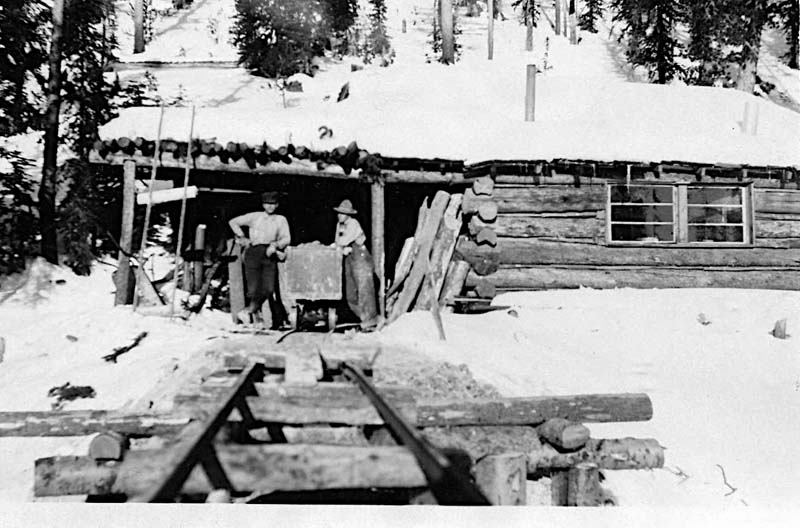
Wolfang Camp, where Dan and his son developed a tungsten mine.
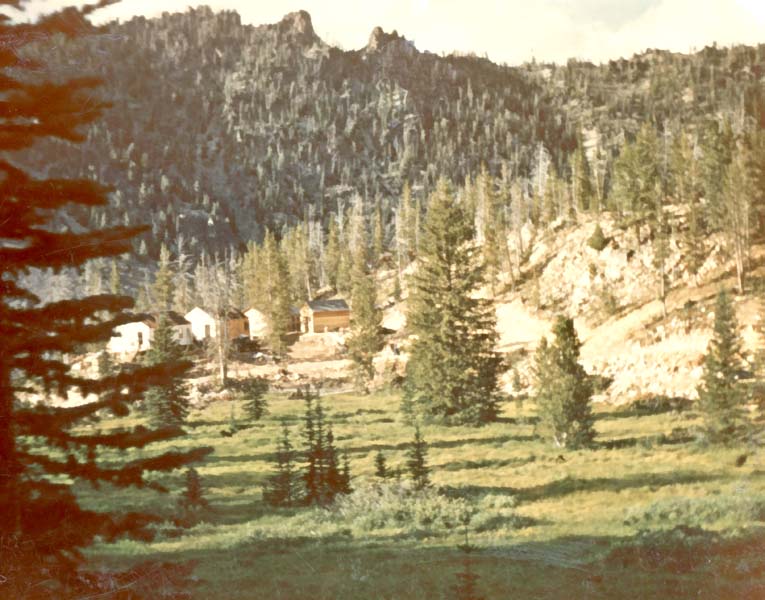
He then headed back to Warren but stopped on the east side of Elk Summit, where he decided to prospect. He dug a small tunnel and built a cabin at a place called Fawn Meadows. Dan located about ten claims and started a second tunnel, which looked promising. The following year, he sold all his claims at this site to the mayor of Topeka, Kansas, for nine thousand dollars. Newly enriched, he went to Meadows, which was near contemporary New Meadows, and bought the town site and livery stable. Even so, he kept on the move. He spent time in Nevada at the bountiful Goldfield Camp, where he helped build a mill for a company, working with Jackson Lee Davis, who later struck it rich and became known as Diamondfield Jack. After Nevada, Dan went to San Francisco, and followed a yen to prospect in Canada. The latter venture was short-lived and he returned to Meadows. There, he asked the new schoolteacher, Grace Turner, to be his bride and she accepted. They were married in Meadows and honeymooned at Payette Lake in 1906.
What followed for the couple was a back-and-forth life between Big Creek and Thunder Mountain. At Big Creek, Dan drove tunnels and prospected. When Grace became pregnant with my father, Robert James McRae, she rode a horse out of Big Creek to Warren and on to Meadows—a journey of about ninety-five miles—where she gave birth less than a week later, in 1908. Four years later, the couple’s daughter Marjorie was born in Meadows and when she grew up, she married Jim Collord.
The next big adventure of Dan and Grace came in the spring of 1914, when he was granted a prospecting lease on the property of the Dewey family, who owned the Dewey Mine. He walked and snowshoed about forty-five miles from Big Creek to the mine. For the next nine years, he placered the ground and made a good living.
I have entries from a diary kept by Grace during that time, which provides a vivid portrait of their pioneering life. Here are excerpts from the year 1914:
April 28
Not much snow below Caswell cabin, but from there to the Dewey, it seemed like mid-winter. It is melting fast. The snow has drifted between the toilet and the house until it is as high as the house roof. It is a late season here, we have not seen one bluebird yet. They usually come by April 10th. Men went to Sunnyside to get pipe and to shovel snow. Dan has a job as watchman at the Sunnyside, while postmaster Julius Colmorgen is outside in Boise on business. I washed and cooked, baked bread and cake. Children have the grippe, and are sick in bed.
May 3
Five days it did not freeze. Roy Elliot came up from his ranch on Big Creek. Brought five-and-one-half-dozen eggs. Men working on pipeline to reservoir, placing rails and shoveling snow from placer pit. Nice day, we went up to see how the pipeline was progressing. Just as we were returning, along came Larry Phelan and son, John Routson and daughter Edna, bound for the Billy Mitchell ranch on Marble Creek, three miles from the Middle Fork of the Salmon River. Roy Elliot has gone out to see about the mail contract. Fred Holcomb, our neighbor to the south two miles distance, and Rufe Hughes came by with a deer for us. We had a fine time. Robert and Marjorie walked down to Roosevelt Lake, caught three fine fish. About 4 p.m., Frank Goldman came by. He and Pete Gilstrap had started together from Big Creek but got separated at the Condon cabin. Gilstrap came in next day with a long string of fish and Robert’s boots from the Gold King.
Saturday [this would have been May 9 or May 16]
Men getting ready to go down into mine to look for vein that Pete Gilstrap knows about. Fred Holcomb [arrived] at 8:30 a.m. He had severed his thumb until it was hanging by just a small piece of skin. I sterilized flour and sugar by heating it, stuck the hanging thumb back in place as best I could, wrapped it good, and Dan will walk to Cinnabar Mine with him, from there he will proceed by stage to the doctor. Gilstrap thinks he has found the vein, but will wait for Dan to let him down on a rope when he gets home. Snowing and blowing. Dan got home. Men placed boxes and sluices with riffles. Tried to get down to where Gilstrap knew of vein. They got down to lower level, but found three feet of water. All disappointed.
May 25
Fishing at Roosevelt Lake. Everybody went. We hunted grub worms and looked in old houses floating on lake [the town of Roosevelt was flooded during a mudslide, see “Idaho’s Pompeii,” IDAHO magazine, April 2017]. Found three frying pans. Elliot and Kellogg came with Dan, and they began fishing. Before long, we had twenty nice fish. We started home. What a nice day.
In 1924, my grandfather obtained a lease on claims adjoining Dewey Mine, called the Sunnyside. It had been developed by an eastern company that built and operated a mill and a two-mile tram system for just one year. Word was that 150 workers were let go. The investment was said to be about a million dollars and the mine brought in only one hundred thousand dollars that year.
Dan and my father Bob, who was now a teenager, worked the Sunnyside on a much smaller scale, with fifteen employees, and they did well. But then came World War II, and times changed. The federal government gave priority to copper mining, which was useful in wartime production. Work on gold mines was curtailed by federal law and the mines closed. Our family also had opened the Sunday Gold Mine at Big Creek in 1939, which was successful, but it too was closed by the government in 1942.
My father, now in his thirties, became the metallurgist for the Stibnite Mine and my grandparents followed him there. Stibnite had rich deposits of tungsten and antimony, both of which were important in making steel for the war effort. Grace became a teacher at Stibnite and Dan, then age sixty-seven, was hired as a handyman for a mining company. Dan and Grace lived in Stibnite for the next nine years. During that time, Dan and my father worked together on developing a tungsten mine called The Wolf Fang on the west side of Elk Summit. Dan built a prefab bunkhouse, which was moved to Big Creek and then on to the campsite below Elk Summit. The building, which had room for five men, was erected in July 1954. My grandfather didn’t quite get to see the bunkhouse in place or the impending opening of the mine.
Dan died in June 1954. I chronicled the story of that mine in an earlier issue of this magazine (see “The Wolf Fang,” October 2017). Grace continued to teach in Stibnite for two more years after Dan’s death, until the mine there closed.
Many people knew my grandfather as a friend and admired his skills in prospecting and with dog teams, horses, and as an expert in wilderness snowshoeing. During the Great Depression, his gold-mining operations employed a lot of people in the central Idaho region. A 1940 article about him in the Stibnite Miner attested, “All men were good men in Dan’s book, until they tried to deal from the bottom of the deck. Perhaps the greatest measure of Dan’s success is the number of friends, as distinguished from acquaintances, that he has.”
The article concluded, “If Dan had his life to live over again, we’re sure he’d do it the same way. He’d turn to Grace and say, ‘Come on, let’s go to Thunder Mountain.’ Grace might demur a little, but finally she’d nod, and the next day they’d be packed and on their way to Thunder Mountain, and the rich, full, useful life awaiting them.”
This content is available for purchase. Please select from available options.
Purchase Only
Purchase Only

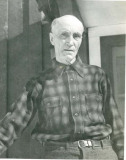
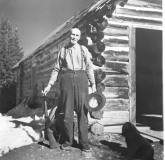
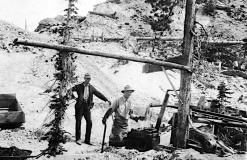
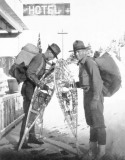
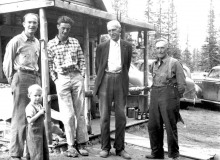
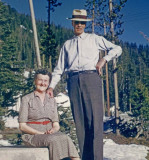
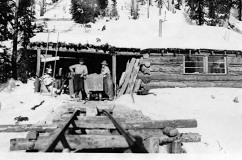
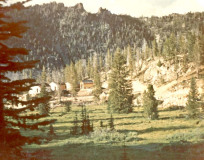
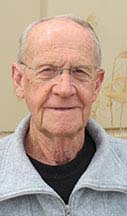
Comments are closed.